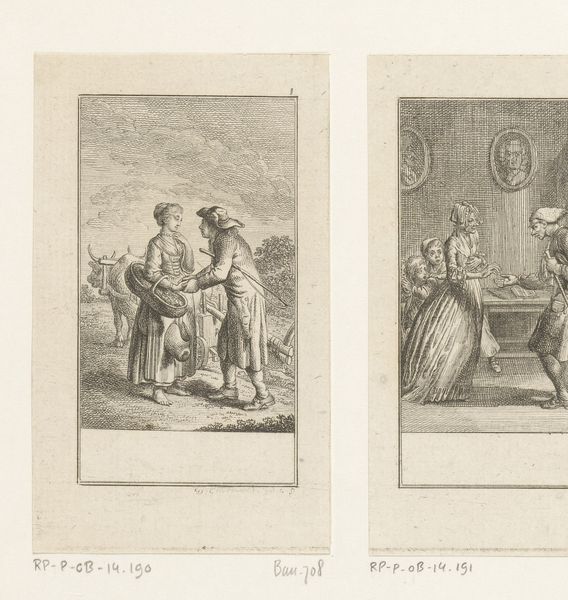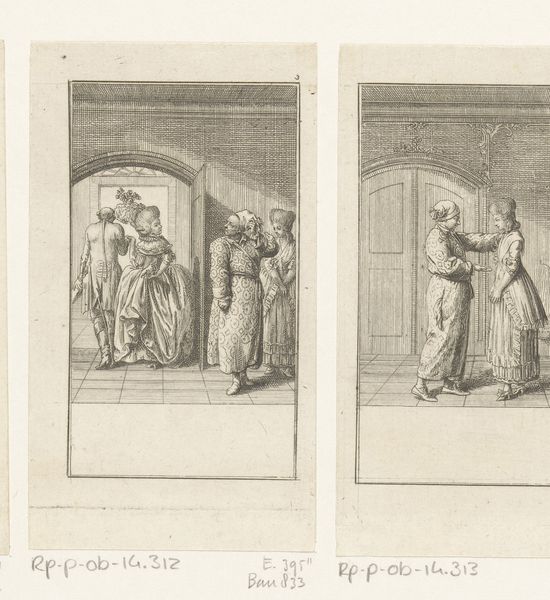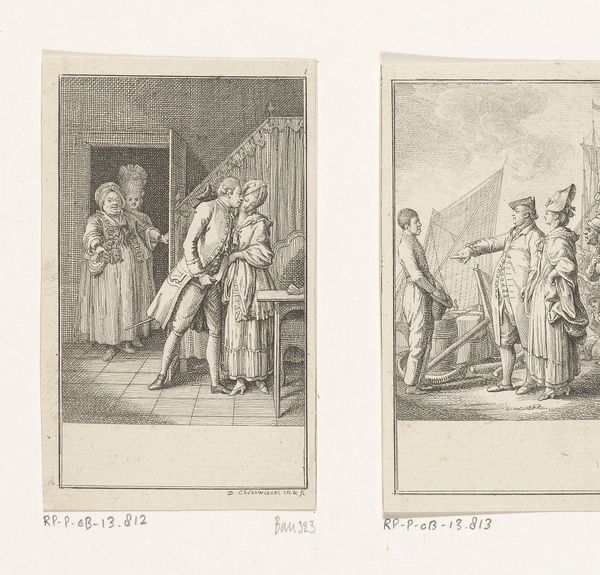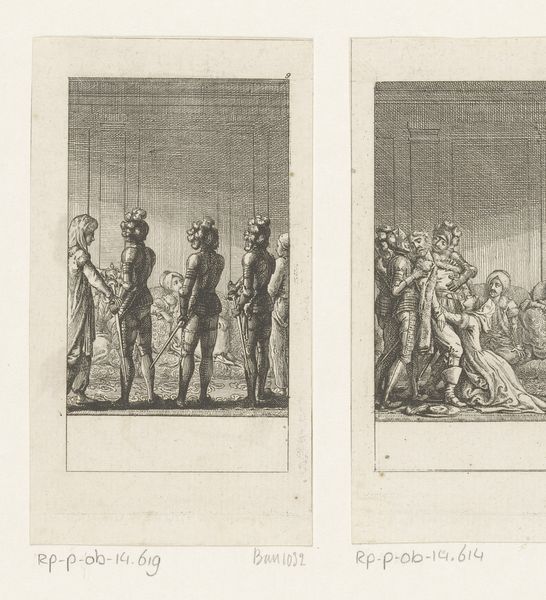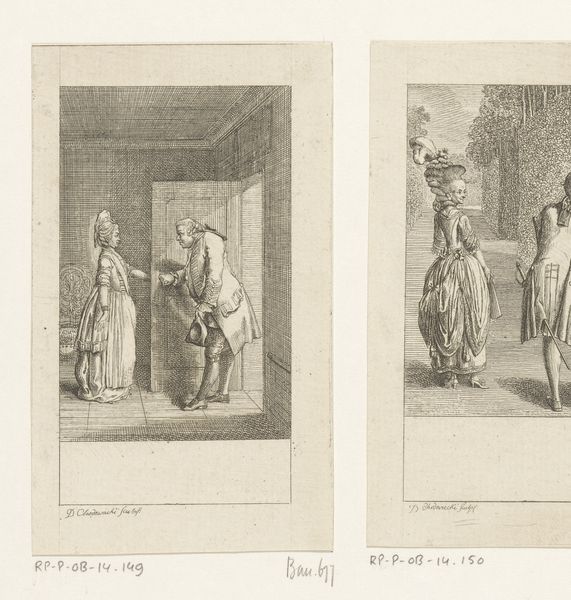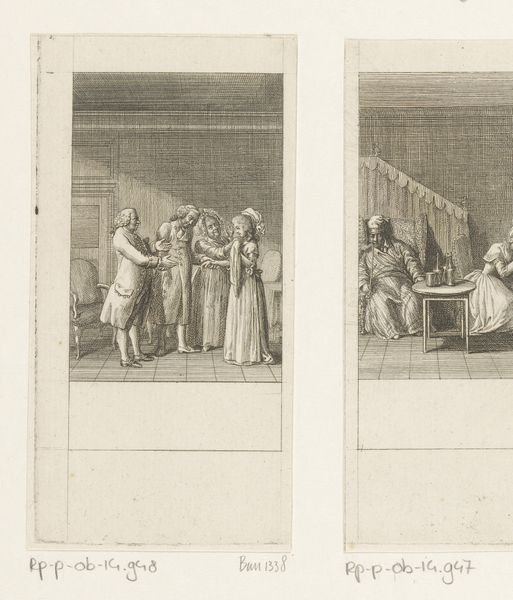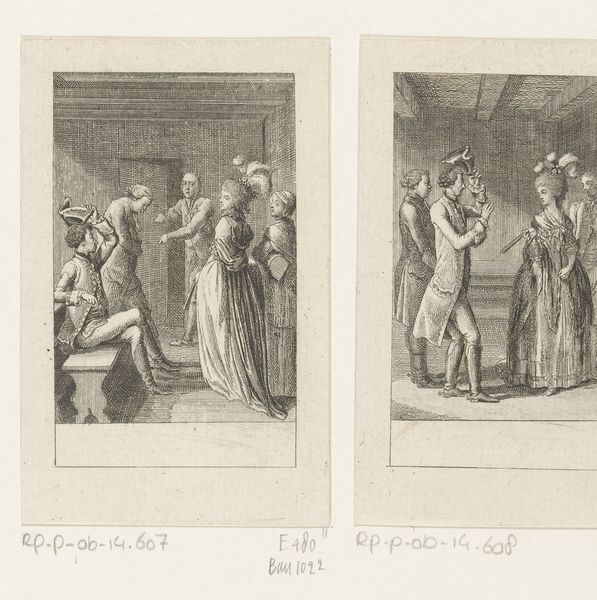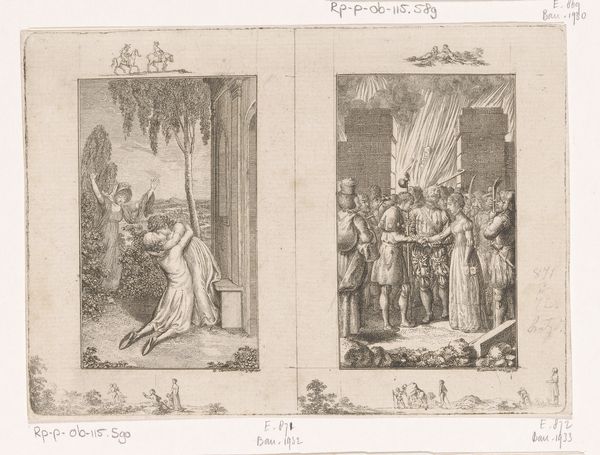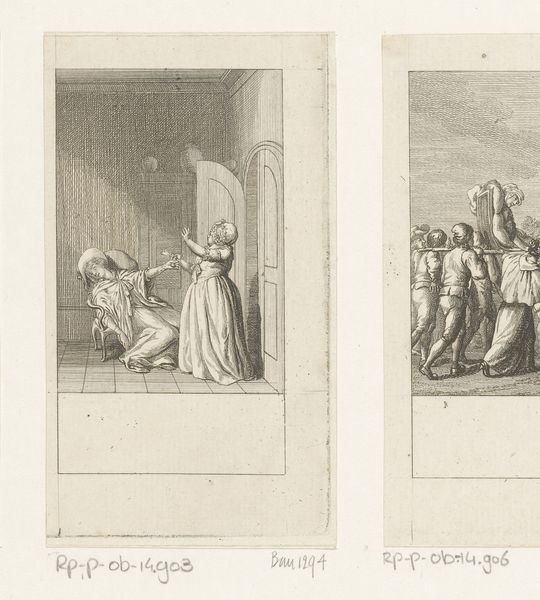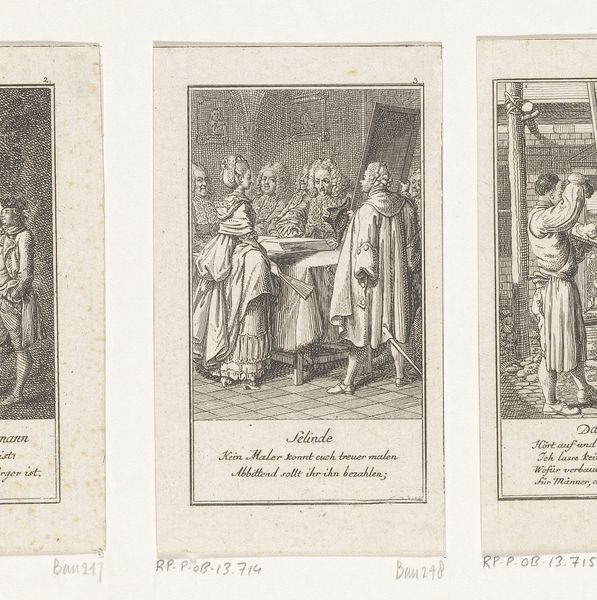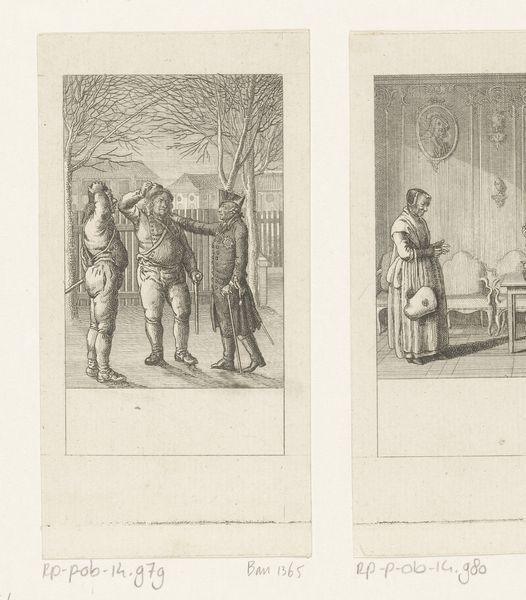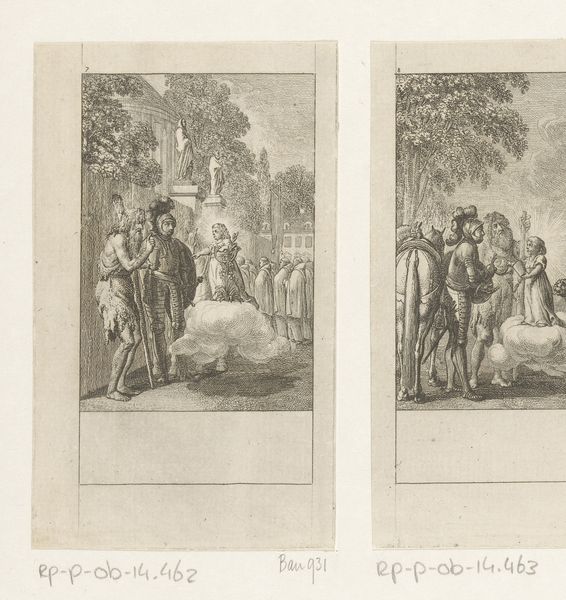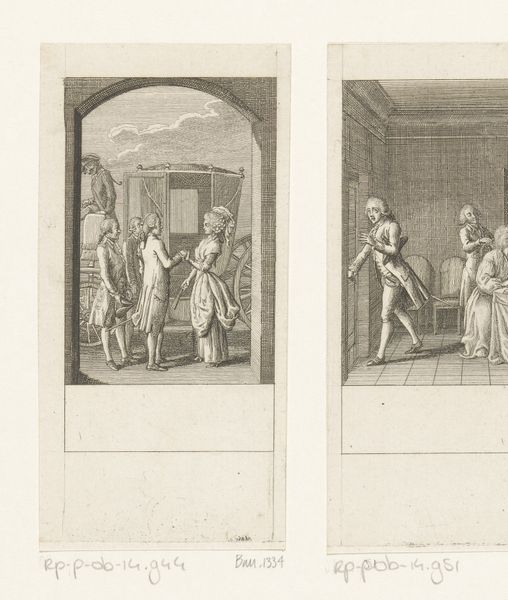
Dimensions: height 114 mm, width 65 mm
Copyright: Rijks Museum: Open Domain
Curator: Looking at this piece, I’m immediately struck by the level of detail rendered with what must have been considerable labor. Editor: Indeed. What we have here is an engraving by Daniel Nikolaus Chodowiecki from 1783. It's titled "Franz von Veltheim treurt om zijn dochter Adelheid," which translates to "Franz von Veltheim Mourns his Daughter Adelheid." Curator: Mourning is certainly palpable in the stooped postures and shadowed faces, even given the rather clinical detachment typical of engravings of this era. How fascinating that even within this small format, a whole narrative unfolds, pulling us into an intimate, yet formalized scene. Editor: Chodowiecki worked primarily as an engraver, and this piece is an excellent example of his technical skill. Prints at the time were essentially a form of mass media. Notice the precision of the lines—every stroke is intentional, contributing to the overall sense of drama and historical record. These engravings helped to disseminate Enlightenment ideas and morals, targeting a wide audience through affordable art. Curator: And affordable production doesn't negate its stylistic merits. Note how he uses hatching and cross-hatching to create a sense of depth and volume. The composition directs the viewer's eye—from the bereaved father, centrally placed in both panels to the surrounding figures, each contributing to the narrative tension. How were prints received back then, socially? Editor: They were extremely popular! Reproducing images made history painting and portraiture accessible beyond the elite circles, but let’s not ignore that production served the ruling class, too. Engravers relied on patronage. Examining what these prints depict also reveals prevailing social values of the era; family, duty, and—as evident here—the public performance of grief. Curator: A good point; and with the historical context examined, that in turn elevates appreciation of form in pieces such as this, enriching one’s experience beyond what visual interpretation could suggest alone. Editor: Agreed. There is always a richer story revealed in looking closely at the materiality of a piece of art and acknowledging the labor behind it.
Comments
No comments
Be the first to comment and join the conversation on the ultimate creative platform.
